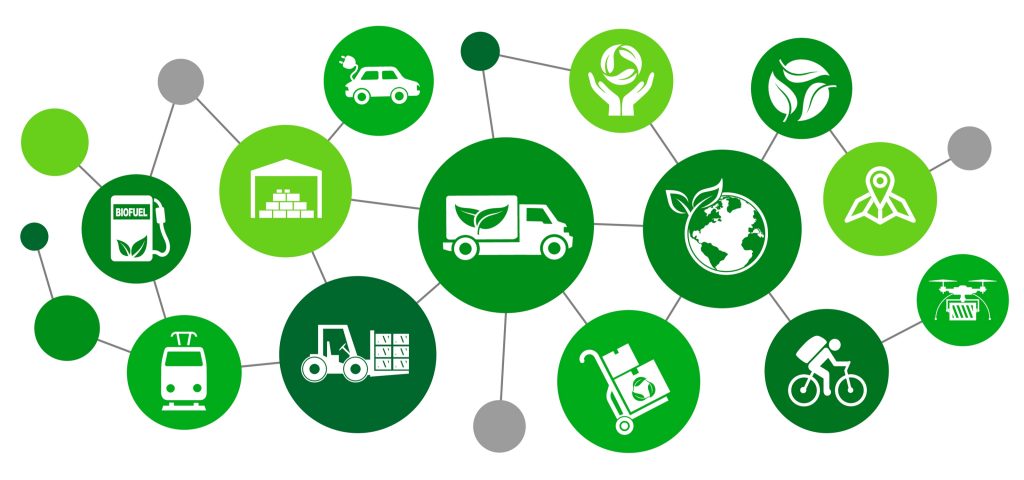
These days, consumers prioritise purchasing products and services from companies that value sustainable practices. Corporate social responsibility has pressured businesses to take a greener approach to their operations. Consumers want to purchase from businesses that do more for the planet than simply use sustainable packaging. They want to engage with businesses that do everything they reasonably can to be environmentally friendly.
In addition to this, many environmentally friendly practices can also cut costs on energy use. This is especially true in areas like a warehouse where lights and amenities are constantly running. There are several methods of improving the sustainability of your shipping warehouse, which will help reduce the cost of operations and make your business more attractive to consumers.
Reducing Energy Consumption
The primary contributor to a shipping warehouse’s carbon footprint is the energy it uses to operate. Lighting and climate control make up the majority of a warehouse’s energy use. Clearly, the workplace can’t afford to simply reduce the level of lighting or climate control without some major risks. Low lighting will make the workplace unsafe and poor humidity and temperature control could lead to damaged or weathered goods.
However, there are methods of lowering a warehouse’s energy expenditure without allowing the quality of goods or workplace safety to suffer. For example, alternative lighting sources can be implemented in a warehouse. Older styles of lighting such as metal halide, or halogen lights lose a great deal of the energy they consume as heat. LED lights can provide the same amount of light, if not more, without wasting energy through heat. Modernising the kinds of lights used in a warehouse will have an upfront cost but will lead to savings in the long run.
Instituting a lights-off policy when no one is present in rooms like break rooms and restrooms is another simple way of cutting energy costs. These policies can also be easily enforced with very little investment by purchasing timers or sensors for these rooms.
Reusing Materials
Warehouses can also produce a huge amount of solid waste if they aren’t careful about their use of materials. Product pallets and cardboard boxes are prime examples of this. Even relatively harmless materials such as wood can take over a decade to decompose in landfills. Throwing these materials out is not only bad for the environment, but it is also expensive because anything that is taken to the landfill has to be replaced. By reusing materials whenever possible, warehouses can save money while being environmentally friendly.
Benefits of Green Warehousing
Increased efficiency
Green distribution practices prioritise efficiency to be environmentally friendly, but an added benefit of that is more efficient workplace operations as well. For example, by optimising the truck-loading process a warehouse can move more products in one shipment. This is good for the environment because more products are being delivered with the same amount of fuel, but it also leads to more efficient business. More efficient businesses tend to have larger profit margins because they waste less money.
Reduced Costs
This benefit goes hand in hand with the previous one. More efficient businesses save money on the cost of labour, resources, and energy consumption. These savings can come from nearly any aspect of warehouse operation. Reusing materials frees up money that would otherwise have to be reinvested into necessary tools such as pallets or boxes. Efficient shipping routes and loading practices can save money on fuel and allow more products to be moved at once.
Improved Risk Management
Implementing greener warehouse operations also improves your business’s risk management capabilities. Firstly, your employees will appreciate a safer workplace. Greenhouse gas emissions have a lasting impact on worker health that you could be liable for in the future. Secondly, operating an environmentally friendly business will improve your public image and encourage more potential customers to engage with your company.
Improved Service
Making your warehouse more efficient doesn’t just make it more environmentally friendly, it also enables your business to better meet the expectations of customers. Streamlining operations to reduce energy use will have a positive impact on the environment, but it also helps you fulfill customer orders quicker.
Competitive Edge
As previously mentioned throughout this article, consumers prioritise companies that are conscious about their environmental impact. This gives your company a competitive edge over other businesses that seemingly don’t care.
